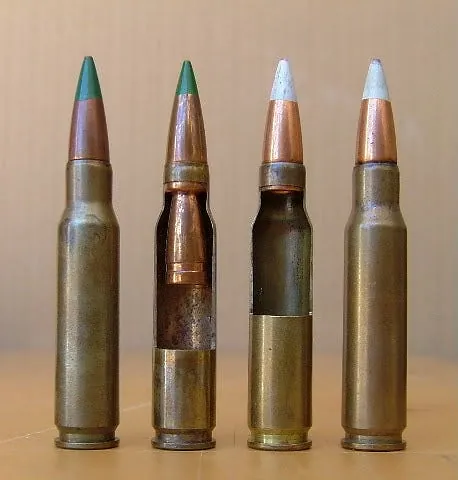Tervell [he/him]
- 3.87K Posts
- 289 Comments

 89·2 days ago
89·2 days agohttps://xcancel.com/ArmchairW/status/1839453350854853047
There’s actually a critical lesson to draw from this and other Ukrainian fiascos, of which the Bakhmut saga and the Zaporozhie Hundred Days come to mind: Ukraine will have ended up losing this war in large part because it consistently tried to fight beyond its means.
The Ukrainians started this war with an enormous army, well in excess of what the Russians could and actually did commit to the fight in 2022. That huge force (the “First Army”) was badly mauled in early 2022, but it was rejuvenated later that year by a combination of ruthless mobilization and massive aid from NATO. This convinced the Russian Stavka to transition to the defensive and consolidate their position in Ukraine, withdrawing troops from more exposed positions in east Kharkov and right-bank Kherson. Any serious assessment of the situation at that point would have been that the Russians had consolidated into a basically impregnable position that the AFU was incapable of breaching (lest we forget in the wake of Russia’s totally unhindered withdrawal from the area, their attempts at reducing the Kherson bridgehead by force in mid-2022 were bloody disasters), and the correct course of action was to start digging in and negotiate a peace treaty in the meantime.
The Ukrainian leadership instead threw a disturbingly large portion of the “Second Army” into Prigozhin’s meatgrinder in Bakhmut and then ordered not one but two large-scale counteroffensives into Zaporozhie and the Bakhmut flanks using the post-Bakhmut remains of the “Second Army” and their NATO-supplied “Third Army.” Those failed with enormous losses, opening the way for Russia to transition back to the offensive in late 2023 and begin systematically rolling Ukraine out of the Donbass. The correct course of action at this point was, again, to find a tenable defensive line and start digging. Zelensky instead ordered a “Hail Mary” offensive in Kursk with the remnants of the “Third Army” and significant elements from a lightly-equipped “Fourth Army,” hoping Russian border defenses were weak despite their having ample warning of Ukrainian designs on the border region (courtesy of several earlier, smaller raids) and plenty of time to prepare. It proceeded to fail with enormous losses - Ukrainian forces breached the border, began to exploit, and ran square into a Russian haymaker counter-punch that stopped them in their tracks. The Ukrainians then reinforced failure, sending massive reinforcements into a death pit in an attempt to keep a sliver of Russian soil under their flag as a middle finger to Putin.
And while this was happening the front in the Donbass started to collapse with Russian troops making large advances and seizing key terrain, in no small part because the AFU’s resources had been systematically redirected to a tertiary operation far to the north. We’ve seen, again and again and again, that when the Ukrainians got resources and generated forces, rather than admitting they are the weaker power here and working to strengthen their positions and conciliate, they instead squandered them on hugely ambitious and equally doomed offensives. In 2023 these offensives were aimed at restoring their pre-2014 borders when Donetsk may as well have been on the Moon for them, while in 2024 their ambitions transitioned to the outright insanity of conquering southwest Russia despite the fact they’d been on the military back foot for the last year. These are the moves of a power setting objectives beyond its means to achieve, and they will probably end up dooming Ukraine as a sovereign state going forward.
HK did actually develop a prototype along those lines (I think it was using proprietary magazines though, not sure), but it didn’t end up going anywhere

however, there are actually modern license-built rifles that implement the concept (this one without a stock for US law reasons)


 76·4 days ago
76·4 days agohttps://xcancel.com/maphumanintent/status/1720933055307600231
Fun theoretical exercise I’m currently working on for the @fortisanalysis side of things:
US refineries (total) only store about 40 million gallons of military-grade jet fuel at any given time, or about 36,400 flight hours for an F/A-18E/F Super Hornet launched from an aircraft carrier. For 40 x -18’s per carrier, this is about 910 flight hours. A carrier holds roughly 3 million gallons of fuel for its wing, about 68 flight hours per bird. Now consider that a notional mixed complement of 20 x F-35’s and 20 X F-15EX’s operating out of Kadena AFB would consume about 62,400 gallons per hour combined. Thus, just a single carrier wing and a single AFB wing’s complement of fighters (80 combined) theoretically all operating at once would drink 106,400 gal/hr.
So…
The net stores of military jet fuel immediately available from US refiners above the global contingency supplies managed by the Defense Logistics Agency at any time represents about 375 net flight hours for one carrier and one air wing…less than 16 days of high intensity air operations by far fewer assets than the US would throw into an all-out theater conflict in the Pacific Rim. DLA Energy ended FY2022 with 1.68 billion gallons of on hand inventory of jet fuel to serve the entire DOD combined inventory of 14,000+ aviation assets - cargo, fighter, rotary wing, bombers, drones, tankers, and recon. Which begs the question: How fast would two theaters of conflict burn through all contingency supplies of fuel? And what does DOD do when the well runs dry?
Reminder that for the Gulf War’s air campaign, the US had nearly 6 months to prepare, move assets into place, build up whole new infrastructure, etc., right next to Iraq without the Iraqis being able to do much to respond. Westerners love to call back on that campaign to justify their belief that the US/NATO could totally destroy any opponent in just a few weeks with their superior air forces, but completely ignore the logistical realities of actually doing so. And today, with the proliferation of long-range precision munitions, actually managing to build up the concentrations of forces and supplies necessary for large campaigns like this is substantially more difficult - we see this already in Ukraine, with Russian deep strikes doing significant damage, taking out ammunition depots and arms shipments, and wiping out various gatherings of Ukrainian troops and mercenaries.
If Iraq had the ballistic missiles that Yemen wields today, things could have gone very differently back then.
I assume a lot of these patents wouldn’t actually hold up if challenged in court - but I guess you can file them anyway? I’m not familiar with patent law at all, but seeing as there’s literally millions filed, I would assume there really isn’t that much oversight done at the moment of filing… which seems like a great system to have: just let those with the resources to go through the filing process throw shit at the wall, and leave it to anyone brave enough to get dragged into long legal proceedings to challenge them if they’re bullshit.
this (for European patents) says:
grant of patents does not guarantee validity, and revocation is not uncommon. In fact, a large number of patent litigations result in revocation of patents by national courts. Moreover, according to EPO statistics, 70% of opposed patents are revoked or limited during opposition proceedings
And this is for patents that are actually challenged - who knows how many there are for more obscure areas, just sitting around with no-one (wealthy enough) to challenge them? (and I would assume this is even worse for the US)

 6·6 days ago
6·6 days agoThere were a bunch of projects during the Cold War seeking to improve hit probability (as analysis had shown that most rounds fired don’t actually hit) - generally, the idea was to fire several projectiles with each shot, to increase the statistical chance of at least one hitting.
The TKB-059 is probably the simplest and most basic attempt, by just literally tripling the gun and firing 3 bullets at once, but this obviously had the disadvantage of a lot of extra bulkiness, weight and recoil - it was just an experiment, more of a proof-of-concept (or attempt at one, anyway) that wasn’t really expected to go very far. The West also attempted something simple, but from a different angle - the ammunition itself, with duplex & triplex rounds, where you’d have several bullets stacked in the cartridge itself, but those didn’t work out due to accuracy issues caused by the several bullets interfering with one another.

Most other attempts were based on firing several projectiles in very quick succession - for example, the Russian AN-94 (which is after the Cold War, but it’s still building on this idea) had a special hyperburst mechanism that would fire at a rate of 1800 rounds-per-minute (while most regular rifles tend to be in the 600-800 RPM range)
I wonder if there’s some kind of legal norm thing of “you can’t have references to common swears in an official document!”

 , or if whoever was writing this just wasn’t paying attention (although maybe it’s some kind of deliberate accent thing, since there’s also dere instead of there? I honestly have no idea where they were going with that particular dialogue, like why pick this specifically to illustrate the concept?)
, or if whoever was writing this just wasn’t paying attention (although maybe it’s some kind of deliberate accent thing, since there’s also dere instead of there? I honestly have no idea where they were going with that particular dialogue, like why pick this specifically to illustrate the concept?)

 5·6 days ago
5·6 days agowould “comedy sketch about cancelled TV show host coming back but having to adhere to network guidelines because he’s struggling financially and doesn’t want to be cancelled again” be fine?
That’s basically just a synopsis of the video, I guess. I don’t know how to write those in a nice and compact manner. Maybe just “comedy sketch about cancelled TV host” would be enough?
I think it’s based on the Type 81, which is sort of like an AK-SKS hybrid (AK-style bolt and receiver, SKS-style short-stroke gas-piston)

 2·7 days ago
2·7 days ago

 5·8 days ago
5·8 days agoI assume so. There might be more information on the Chinese side of the internet, what I was able to find from a cursory search is that there isn’t a date announced yet (https://www.163.com/dy/article/JC71EEQ10511B8LM.html)

 4·23 days ago
4·23 days agoSure, but my point was just that this shouldn’t really be any worse than the vast majority of modern assault rifles, which have similar barrel lengths (in fact, the new QBZ-191 rifle that’s replacing the 95 has exactly a 14.5″ barrel in its standard configuration). If you’re shooting with the muzzle close to a wall (or a bench as in your example) it’s not going to be nice, but you’ll have the same problem with most other modern rifles.

 4·23 days ago
4·23 days agoThe barrel’s apparently supposed to be around 14.5 inches, so it really shouldn’t be much worse than like an M4. It just looks really short since it’s a bullpup.
The muzzle devices are I assume similar in design to the AKS-74U muzzle booster, which seems to be decently effective (of course, since the 74U is so short, even the reduced muzzle blast is still excessive, but this QBZ has an extra 6.4 inches of barrel, which should help a lot)

 5·25 days ago
5·25 days agoyeah, I was thinking about linking that video when I was making the post, but I forgot

there’s also a Forgotten Weapons video that goes in more depth

 57·25 days ago
57·25 days agohttps://x.com/ArmchairW/status/1831176695589618060
Could [the Europeans] reopen the Bab al-Mandeb without US assistance?
After all, right now the Western mission in the Bab al-Mandeb is run by the EU as EUNAVFOR Aspides, so they’re already in charge of the area of operations. Reopening the straits will require ground troops to land and occupy enough currently Houthi-held territory to prevent drone and missile launches at maritime traffic transiting the strait. Can the EU muster the force? Power projection requires amphibious assault ships and aircraft carriers. Four European navies operate these capital ships: the UK, France, Italy and Spain. Between them they have four aircraft carriers worth the name (Cavour, Charles de Gaulle, Queen Elizabeth, and Prince of Wales) and eight amphibious assault ships of note (Giuseppe Garibaldi, Juan Carlos I, Galicia, Castilla, Mistral, Tonnere, Dixmude, Albion, and Bulwark). The Italians additionally operate three very small amphibs of the San Giorgio-class. Many of these ships are in some kind of reduced readiness or maintenance status. Realistically the European Union could deploy on a “surge” basis two carriers (with a weaker combined air wing than a single USN carrier) and a single amphibious group comparable to a USN Amphibious Ready Group. This sealift capability would support landing a brigade-size element in Yemen.
The Europeans also maintain a sizable number of airborne formations (Britain, France, Germany, Italy, and Spain all have brigade-plus or -minus elements standing and aren’t faced with fighting Russia on short notice), and can field about 100 heavy transport aircraft, mostly A400s. Based on RAND corporation analysis (link in the first post) it would take approximately 105 C-17 sorties to deliver one US infantry brigade with appropriate enablers for a high-end battle. Yemen will be a high-end battle. Although an A400 can jump about the same number of paratroopers as a C-17, it can carry only about half the cargo. Ergo, something like 150 A400 sorties would be required to deliver one brigade, not to mention ongoing sustainment requirements. As it’s doubtful more than 30 or so aircraft would be (or even could be, I’m not going to try to analyze ramp space in Djibouti) committed to the operation, the EU task force could realistically only jump a single fully-equipped brigade into Yemen alongside the amphibious landing.
Barring military access from Saudi Arabia or Oman, these two European brigades are going to have to hit the dirt and seize a seaport (perhaps the city of Al Hudaydah, shown) to allow conventional shipping to come in and “administratively” deliver what’s going to be a pretty meager follow-on force. That entails a city fight. Even with a seized airport and light reinforcements beyond the initial brigade flowing in by air (alongside much of their logistical requirements!), that’s a tall order - particularly given the Houthis have real anti-access/area-denial capabilities and a reasonably competent army. Two or three European brigades in the Middle East, with a mission to seize a major urban area, relying on sketchy air support and tenuous supply lines, can get into a lot of trouble in 2024. Al Hudaydah, for instance, is a Houthi stronghold with a population of close to three-quarters of a million. A smarter course of action may be to enter in non-Houthi controlled eastern Yemen, establish logistics and attack from the east - but it’ll be much slower to open the straits and oh, by the way, will require those aforementioned logistics to travel around the Horn of Africa because the Bab al-Mandeb will remain closed in the interim. So the indirect approach is fraught with its own, very significant, issues.
Which brings me to the crux of the problem - Yemen is a big country. It’s somewhat larger than Iraq and has about 3/4 the population. The vast majority of that population lives in areas controlled by the Houthis. And, most importantly, the Houthis are very competent fighters. Ergo, even a minimal operation to reopen the Bab al-Mandeb should be expected to be something more on the scale of the 2003 invasion of Iraq than the sort of African bandit-chasing expedition we’ve seen European forces actually perform in recent memory. And the EU doesn’t remotely have the capability to deploy and sustain forces at that level. The force that overthrew Saddam Hussein in 2003 was 200,000-strong - an order of magnitude or more larger than what I’ve described above.
So to answer my starting question: No. Not a chance. In fact it would be a significant operation even for the United States - certainly not something that could be done quickly, easily, or with the commitment of minimal forces.

 2·26 days ago
2·26 days agoThe only thing I could find was https://guns.fandom.com/wiki/Heckler_%26_Koch_NBW
I assume caseless is just too niche for pistols - even if you developed it, without a major military adopting it, it just wouldn’t have enough traction for anyone to switch from what they’re already using it, and for militaries pistols are a relatively low priority weapon so they wouldn’t bother with anything particularly groundbreaking

 3·26 days ago
3·26 days agoNot sure, the demos I’ve played are pretty vague about the lore. I think the devs are Polish, so who knows.

 3·27 days ago
3·27 days agoYeah, this is just how it was labeled on the antiques site where I found it, but I also thought it was weird for it to be labeled a Bowie. Although for the clip point specifically, that doesn’t seem to be absolutely necessary - there are bowies with more conventional blades, these days they’re often referred to as “Arkansas Toothpicks” just to better distinguish them, but in the actual historical period the two terms seem to have been used interchangeably.

Still, this one seems too small - but it could also be a situation where the American and English definitions simply differ

 3·1 month ago
3·1 month ago“The West, so afraid of strong government, now has no government. Only financial power” has got to be one of my favorite lines,

 2·1 month ago
2·1 month agoit’s in German - Sicher for safe, Einzelfeuer (single-fire) for semi-auto, and Feuerstoss (which apparently translates to “burst of fire”, but I’m pretty sure this is still a full-auto setting, it’s just that “burst” in English fire selectors is often assumed to mean “limited burst” (to 2-3 rounds usually))









https://www.thefirearmblog.com/blog/2020/07/08/belt-fed-bullpup-lever-action-rifle-chambered-in-44-magnum/
apparently